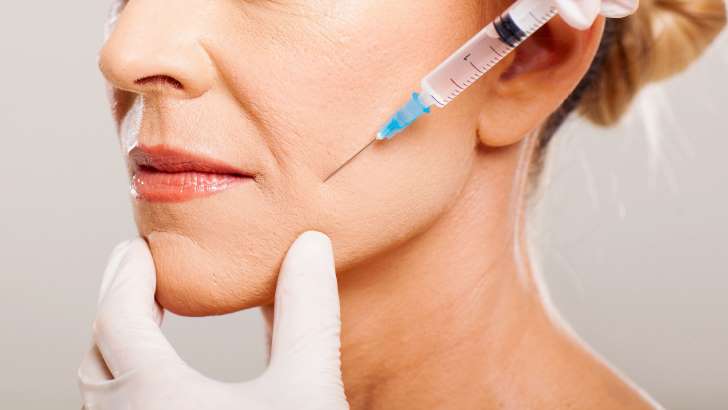Injectables are everywhere in the beauty world (and on your social media feed). But along with the popularity comes a sinister side: unapproved procedures trying to capitalize on the trend that can be really risky. The FDA just issued a serious warning about silicone injections in particular.
In a statement released yesterday, the FDA warned against the use of silicone fillers used for body contouring — think butt or breast plumping. “The FDA is aware of cases in which unqualified providers — some posing as doctors or licensed healthcare practitioners — have injected illegal or unapproved body fillers like silicone or oils into patients,” the statement reads. “Injectable silicone can move throughout the body and cause serious health consequences, including death…. Large-scale injectable silicone for body contouring and enhancement can also result in a painful and hard, gravel-like substance that stays permanently beneath the skin,” the FDA adds.
Silicone injections are particularly dangerous if used to give patients a bigger butt, according to the FDA. “When injected into areas with many blood vessels such as the buttocks (‘butt’), silicone can travel through those vessels to other parts of the body and block blood vessels in the lungs, heart, or brain,” the FDA said. “This can cause a stroke or even death.”
Non-surgical butt-lifts, which board-certified plastic surgeons are performing regularly, technically fall under the scope of this warning, since using any fillers for body contouring purposes isn’t technically FDA approved. If you’re getting any butt injections, the doctor should be using Sculptra, a poly-L-lactic acid filler — not silicone. “I have found Sculptra to be an excellent option,” Laura Devgan, a New York-based plastic surgeon and RealSelf contributor, tells Allure. In addition to being FDA approved for the face, “it has been used for decades by hundreds of board-certified plastic surgeons for adding volume to the buttocks and hips, improving cellulite dimples, and softening a crinkling décolleté,” she says.
Confused about what’s safe and what’s not? In the world of fillers, not only is the actual injection subject to FDA approval, but the uses of that injection are as well. So for example, botulinum toxins (like Botox) are approved by the FDA, but not all of the things it’s used for — everything from balls to blowouts — necessarily are. (For reference, the FDA just officially approved Botox Cosmetic to treat forehead lines — a treatment qualified docs have been doing safely for years.)
“The FDA’s stance that fillers should not be injected anywhere else in the body is a gray zone,” Jaime S. Schwartz, a Beverly Hills-based surgeon and RealSelf contributor, tells Allure. “Physicians using their own clinical judgment have the ability to utilize fillers and other medications for ‘off-label’ purposes. Most of the time these off-label purposes do eventually get approved by the FDA once efficacy and safety is established,” he says.
This is why it is so (so!) important to make sure you’re working with a board-certified plastic surgeon any time you go under the needle or knife and to always discuss the risks before getting any injections. (The FDA expresses the same sentiment on its website.) “Vials should be properly labeled and sealed. If your healthcare provider offers a procedure using a dermal filler that is much cheaper than similar procedures using FDA-approved dermal fillers, or if a product has labeling that looks strange or different than usual, beware,” says the FDA.
Schwartz also advises talking to your surgeon about off-label uses of the filler so that you fully understand the benefits and risks before you end up with a regrettable injection.












